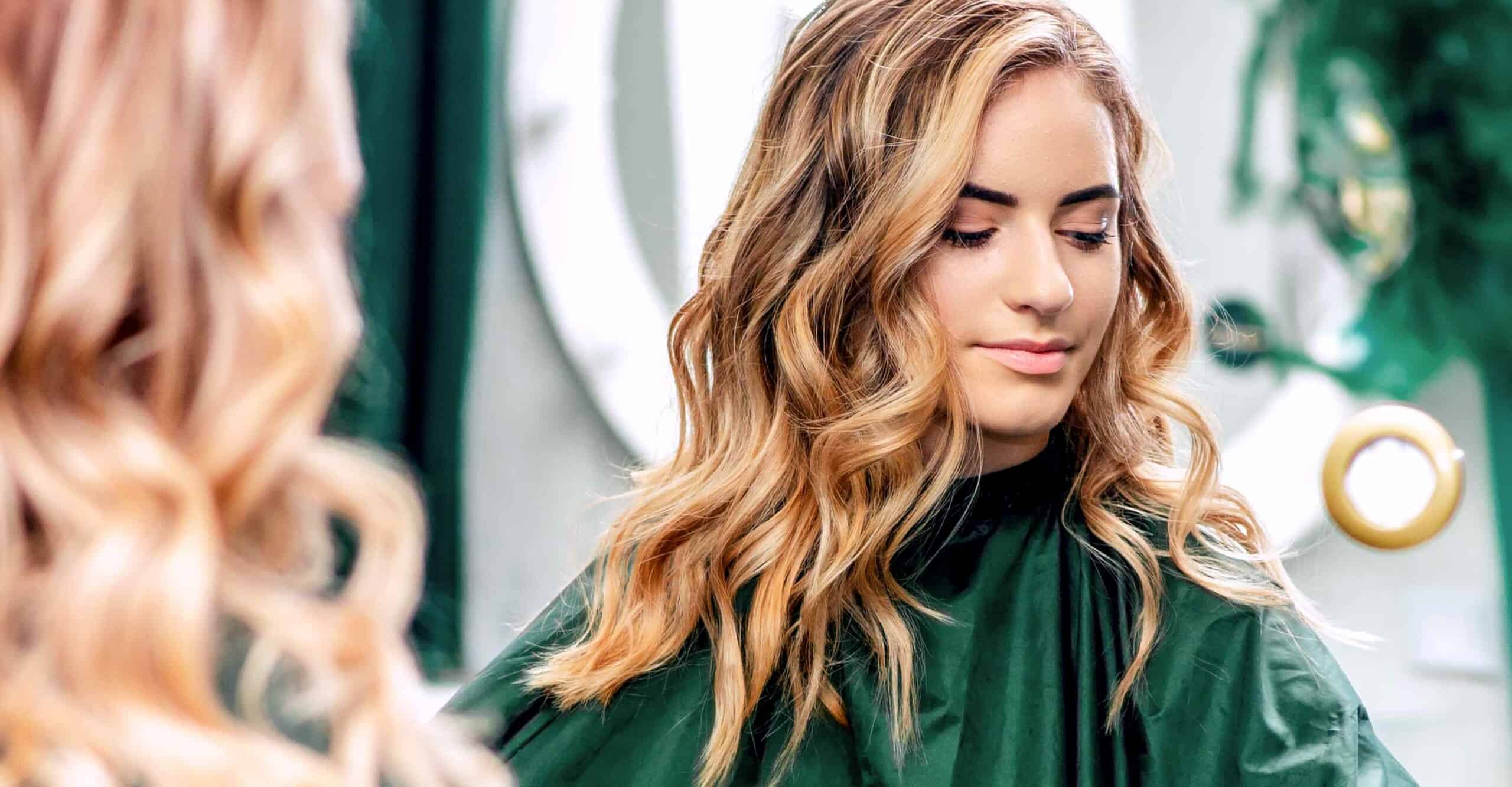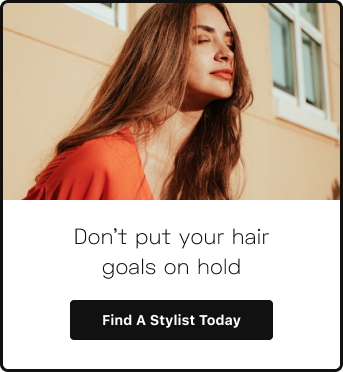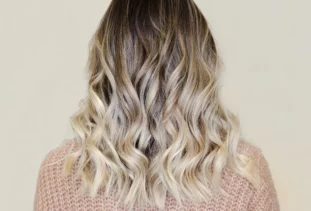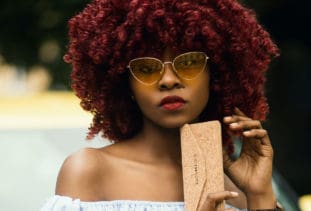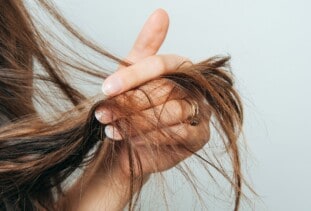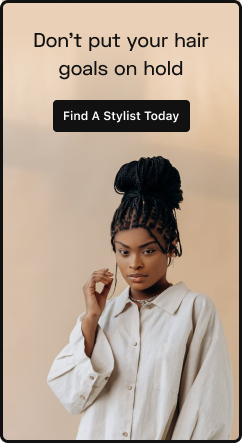Balayage is a highlighting technique where the stylist will paint lightener onto your hair, creating a natural-looking highlight that blends into your natural hair.
The word “balayage” (pronounced bah-lee-ahge) is French — in English, the word translates to “sweep.” We aren’t referring to a broom and dustpan but rather the sweeping motion that a Pro stylist will make as they paint the bleach onto your hair to achieve a balayage look.
For the past decade, balayage has been, well, sweeping the nation. Everyone from celebrities to influencers have tried this hair highlighting technique because it is subtle, fun, and easy to maintain.
But how exactly do Pros execute this look, and what should those interested in it consider? We’ve developed a guide to this popular hair technique and why it may be right for you.
How Does A Colorist Do Balayage?
Balayage is applied via painting rather than folding the hair into foils, which gives it a more cohesive, natural, and layered look. So even though sitting under a large, dome-shaped hair dryer reading a magazine while your hair is covered in foil may be an iconic hair-dyeing image, balayage typically doesn’t require it.
Because the hair isn’t dyed in precise sections from the root, balayage gives hair a more cohesive and natural. Therefore, it’s less likely that roots will grow out and look unnatural, meaning hair that has gotten balayage won’t need touch-ups. The Pro stylist will pick sections of hair to be dyed, usually concentrating on the top layer of hair, the ends, and the pieces that frame the face. This will make for a softer grow-in and creates the natural softness that makes balayage unique.
If you ask for a balayage and your Pro stylist gets out the foil, don’t be alarmed. Depending on the color and condition of your hair, your stylist may opt to use the foil technique used for highlights or hair dyeing to do balayage.
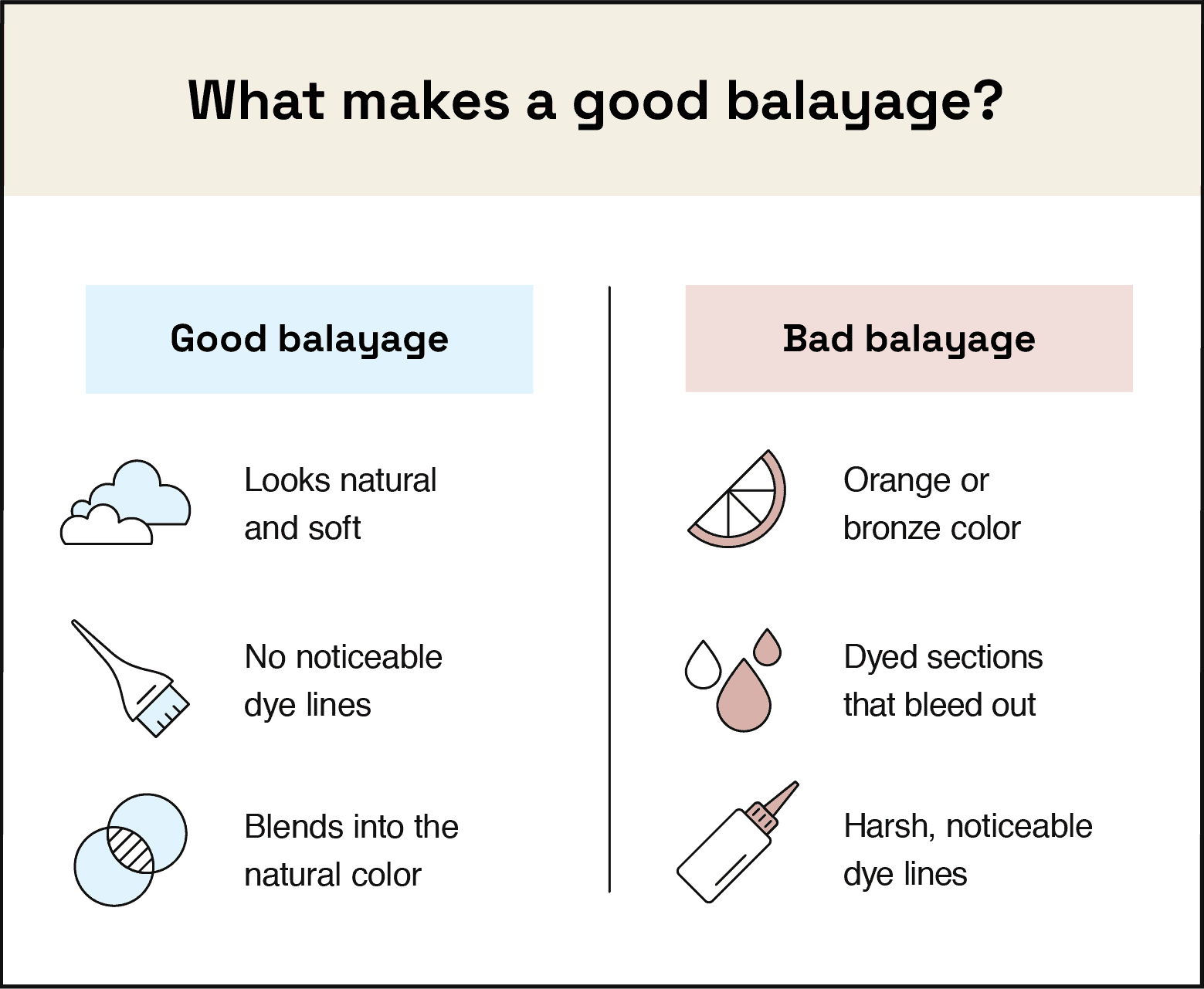
How Do I Know If I Got A Good Balayage?
A good balayage will look natural and soft. There shouldn’t be strong, noticeable lines between the dyed and natural hair — instead, the dyed portions should blend into the natural portions to create a seamless and multi-dimensional look. The dark and light hues of color will mix smoothly so there is no noticeable contrast, yet the style is still textured and has dimension.
How Do I Know If Something Went Wrong?
A balayage done incorrectly could look orange, bronze, or bled out. Bleached hair that appears orange or bronze could have been done incorrectly, and could signal that the bleach hasn’t been applied correctly or has been washed out too soon. Similarly, hair that has been painted and then left with the rest of the hair can look like the highlights are bleeding into the rest of the head rather than being their own sections; using cotton or plastic can prevent this.
Can I Give Myself A Balayage?
Though it is possible to visit a beauty supply store and purchase bleach for a low price, it isn’t recommended that you attempt balayage without the guidance of a Pro. Balayage is a complicated technique that involves subtlety and an expert eye that can pick which strands of hair need to be highlighted.
This can be tough to achieve without training and experience. But more than that, only a trained stylist will be able to teach you about proper hair conditioning and care after treatment. When it comes to dyeing hair, it’s always best to consult a Pro rather than dyeing it at home.
What Makes Balayage Such A Popular Technique?
Balayage has remained popular for those looking to shake up their style because it is a low-maintenance trend that looks more natural and causes less breakage than traditional highlighting.
Balayage is swept throughout the hair and blended with the natural color, creating a softer and less delineated finish. Because the aim is only to create a softer, sun-kissed look, balayage requires less touch-up and sometimes even less dye, reducing the amount of bleach and the risk of breakage.
All of these factors make balayage a less time-intensive and risky process that doesn’t require as many follow-up appointments yet can give your hair the exciting and refreshing new look that traditional highlights do.
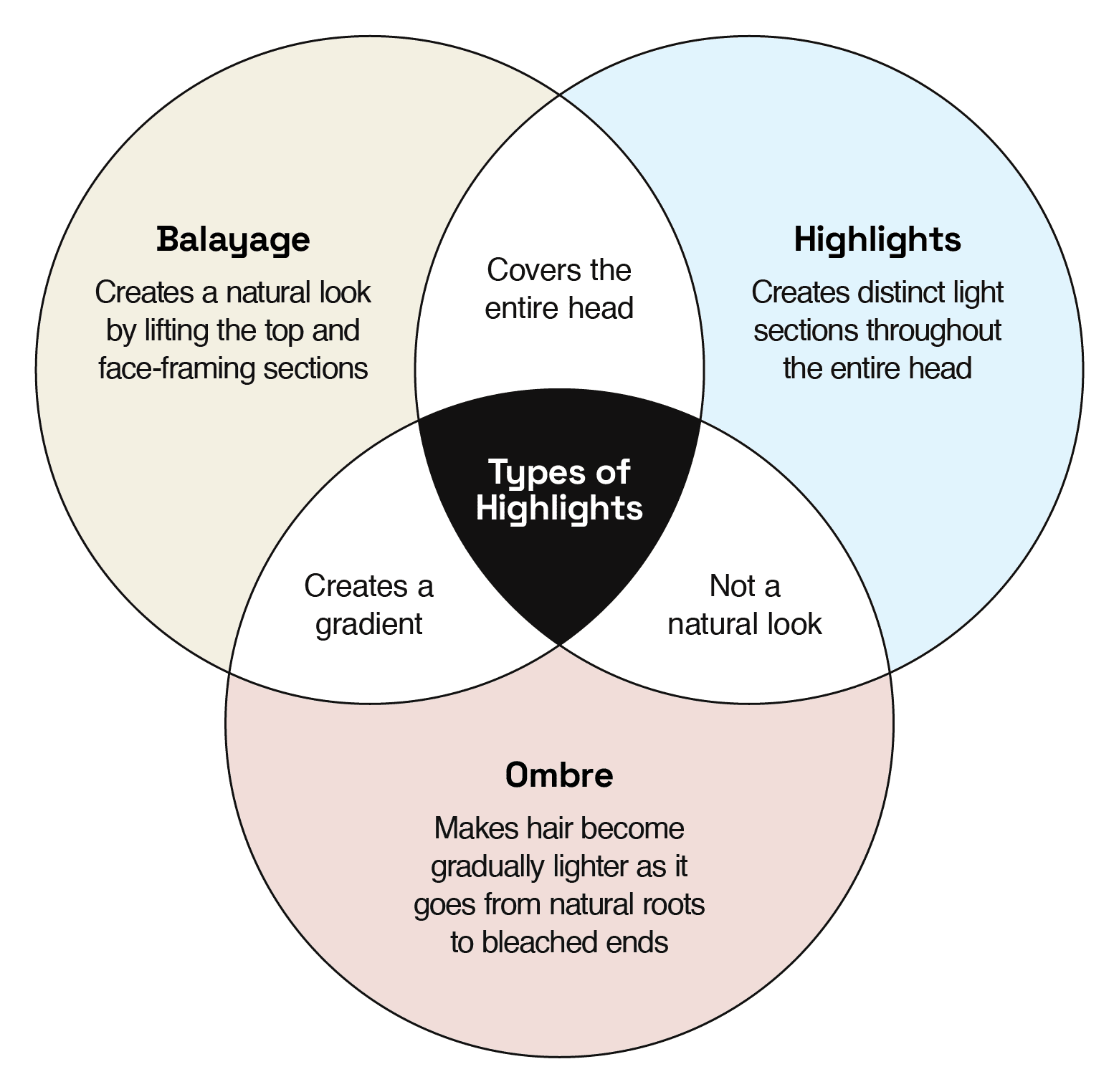
How Is Balayage Different From Highlights?
Balayage is a type of highlighting, but the end result is different from a traditional process involving foil. A foil highlighting process creates a more uniform look and can make the hair overall go from darker to lighter, while balayage is meant to be a more natural-looking and softer highlight.
The first big difference between highlight and balayage is the application process. Traditional foil highlights are applied by sectioning the hair into distinct sections, applying the dye from root to end, wrapping the section in foil to separate it from the rest, and moving on to a new section. This creates distinct sections that are lighter than others.
Balayage, on the other hand, is applied freehand. A Pro will take a brush dipped in lightener and apply it to sections of the hair as they see fit, focusing on hairs that frame the face, the ends, and the first layer. The goal with balayage is to make the hair look naturally lightened and create a multidimensional look.
What’s The Difference Between An Ombré and Balayage?
The most notable difference between balayage and ombre is the definition of the word. Balayage is the technique used to highlight the hair, while ombre is the desired look or outcome of the highlighting.
But apart from semantics, there are other differences between balayage and ombre. Ombre hair will remain dark at the root, and the Pro will apply lightener that makes the hair get gradually lighter as it reaches the ends. The result will be a distinct difference in lightness between the root, which will be your natural color, and the ends, which will be lighter.
Rather than a distinct change in color, balayage aims to create a more natural and sun-kissed look that covers the entire head. Instead of aiming to dye one part or distinct sections of the head, balayage makes subtle changes to the overall color of the head, creating a multi-dimensional highlighted look.
Similar highlighting techniques like sombre and babylights create even more gray area between coloring styles. As the name might suggest, sombre is simply a softer ombre, taking the hair from natural at the root to a shade that is only a few steps lighter, giving it a more natural look like balayage. Babylights are soft-blonde highlights that are placed on small sections throughout the head, aiming to make traditional highlights softer and more natural.
How Much Does Balayage Cost?
You can expect to pay anywhere from $70 to $450 for balayage, though the final cost of the treatment will depend on the condition and color of your hair, the salon you visit, and how much of your hair you’d like to color. Those with longer or darker hair will pay more for balayage than someone with shorter or lighter hair.
Balayage is an expensive process because it is time-intensive and requires an experienced professional who will set their own rates. Though it might seem like an expensive process, keep in mind that follow-up appointments are usually less frequent for this service, so overall cost for upkeep may be cheaper compared to the cost of other hair coloring services.
How Can I Prep For A Balayage Appointment?
Caring for your hair is the first step to getting it ready for balayage. You’ll want to arrive at your appointment with clean hair, as dirt or oil can hinder the lifting process. To help keep your hair in good condition after the appointment, you can also consider doing a conditioning treatment for a few weeks before the appointment to reduce the risk of breakage.
To help clear up any confusion between you and your Pro stylist, you will also want to arrive with a clear image of what you’re going for. Bringing several reference photos can help your stylist know how to color your hair in a way that you’ll like. You can further assist by arriving with your natural hair the way you normally wear it, so your Pro stylist can place the color in spots that will look the best.
Can Anyone Get Balayage?
As balayage is such a subtle and natural-looking highlight, it works for any hair color, texture, and length. That means that practically anyone is a good candidate to get balayage.
However, there are a few considerations that people with damaged or thin hair should consider before going for balayage. On hair that is already brittle, the dyeing process can cause breakage or damage.
The best way to see if balayage would be a good fit for your hair, you should consult with a Pro to discuss your options.
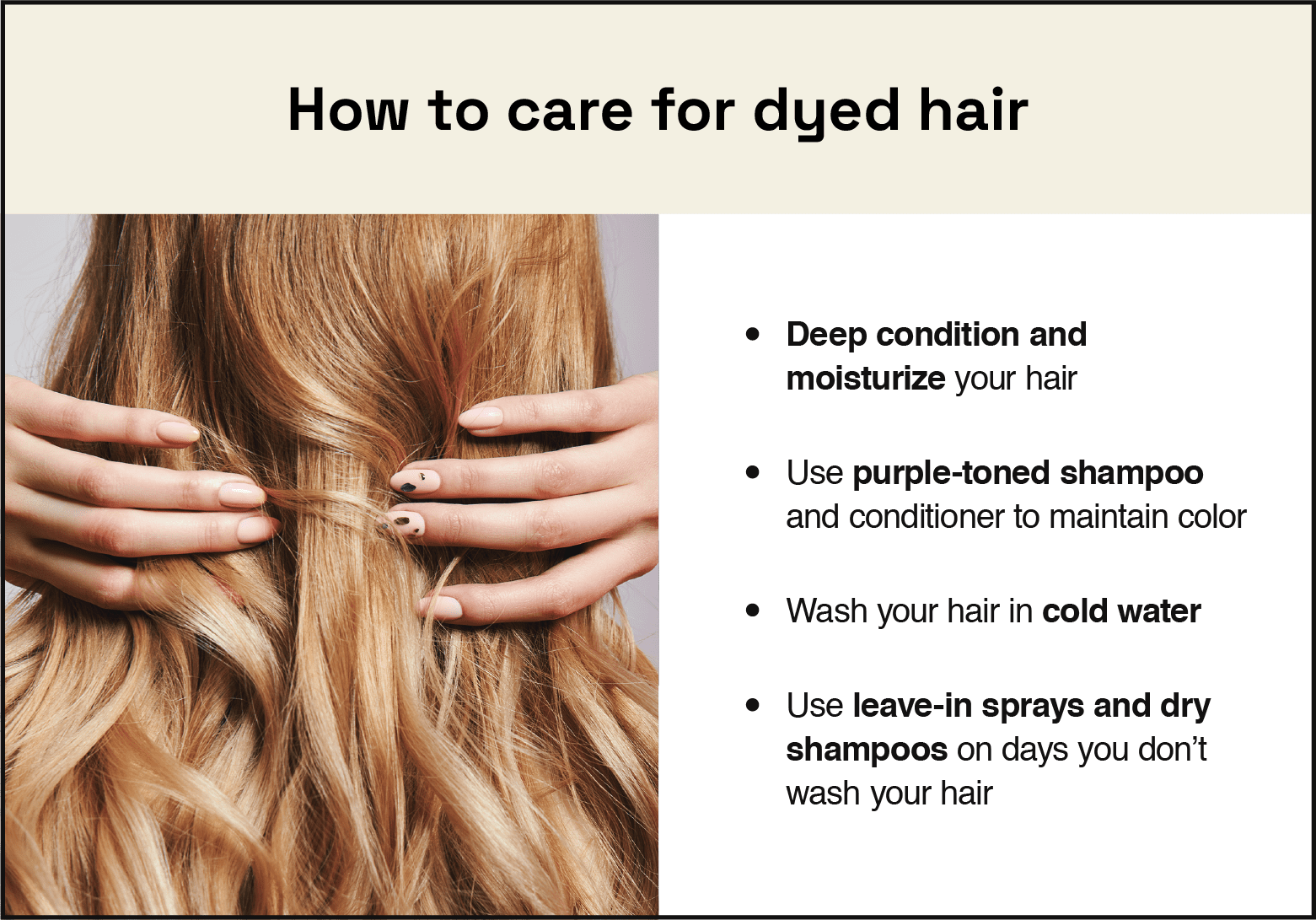
How Can I Care For Balayage Hair?
When caring for balayage hair, you don’t want to hang it out to dry. Moisturizing dyed hair is important. Processes like bleaching can cause damage to the hair, making it more brittle and prone to breakage.
Deep conditioning your hair can help improve it after any drying out that occurs during the balayage process. Occasional deep conditioning can help your hair, but even between deep conditioning treatments, moisturizing shampoos and conditioners can help prevent dryness as well.
Other ways to care for dyed hair are using purple-toned shampoos to maintain color, washing hair less often to keep it from drying out so frequently, turning down the shower temperature while washing and conditioning hair, and using leave-in sprays and serums on dry hair to maintain moisture.
Is Balayage Bad For Your Hair?
Like any hair dyeing process, balayage will do some damage to the hair. However, it really depends on your current hair color, your desired lightness, and the method the stylists chooses to dye the hair. Someone with dark hair who chooses to go light blonde runs a higher risk of someone with blonde or dirty blonde hair who wants to go lighter.
However, those who want the natural and sun-kissed look of balayage will be glad to know that this method of dyeing is typically less damaging than traditional highlighting and all-over hair coloring.
The Pro conducting the balayage will be able to take the correct precautions for achieving your desired look without damaging the hair. Sometimes this may mean multiple sessions or conditioning treatments in addition to the balayage. And once the dye job is over, balayage has a soft and natural growing-out process that reduces the number of touch-ups needed.
The best way to prevent damage from balayage is to get it done by an experienced professional who can give you accurate information about dyeing and care.
Balayage Inspiration
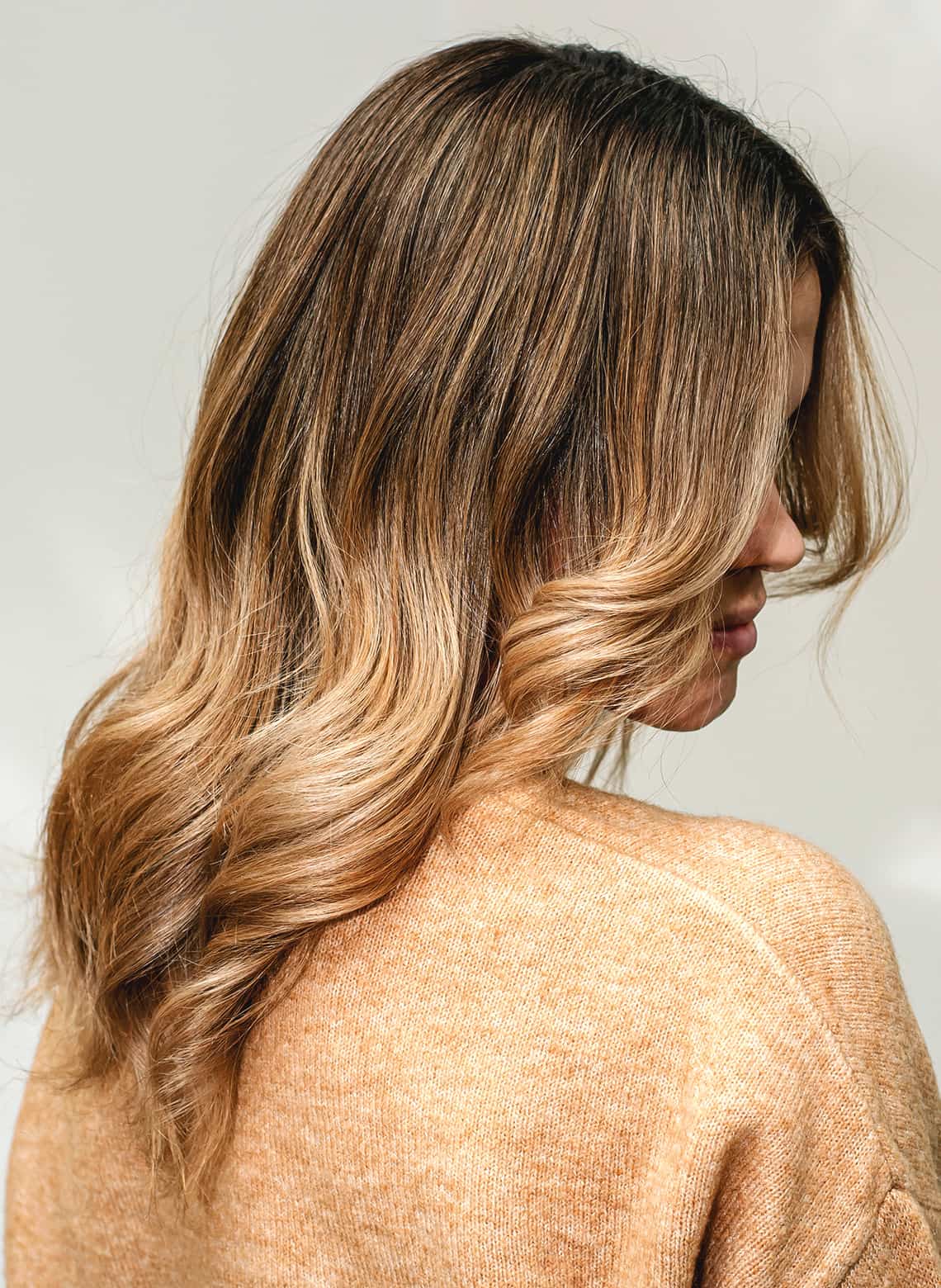
1. Blonde melted balayage
Balayage can create a natural gradient that gives the hair an interesting new look without looking too harsh. This blonde look takes the hair from a caramel blonde root to lighter blonde highlights, achieving a melted look that adds natural dimension without being too obvious.
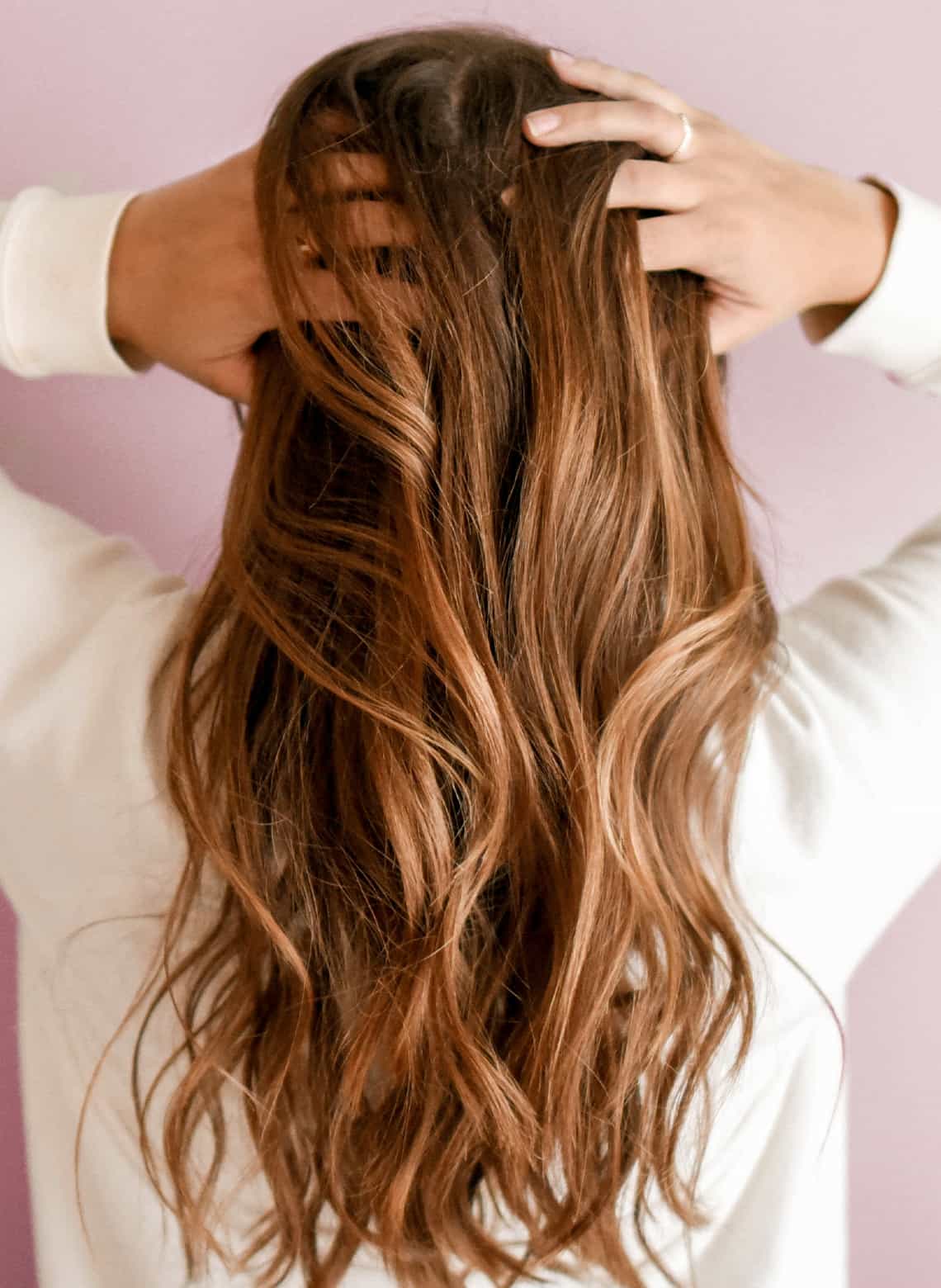
2. Warm balayage
Balayage can highlight hair’s warm tones by adding light colors to contrast with the dark. This can create an effect that makes the hair seem to shine or glow, using your hair’s natural colors to make it look fresh and golden.
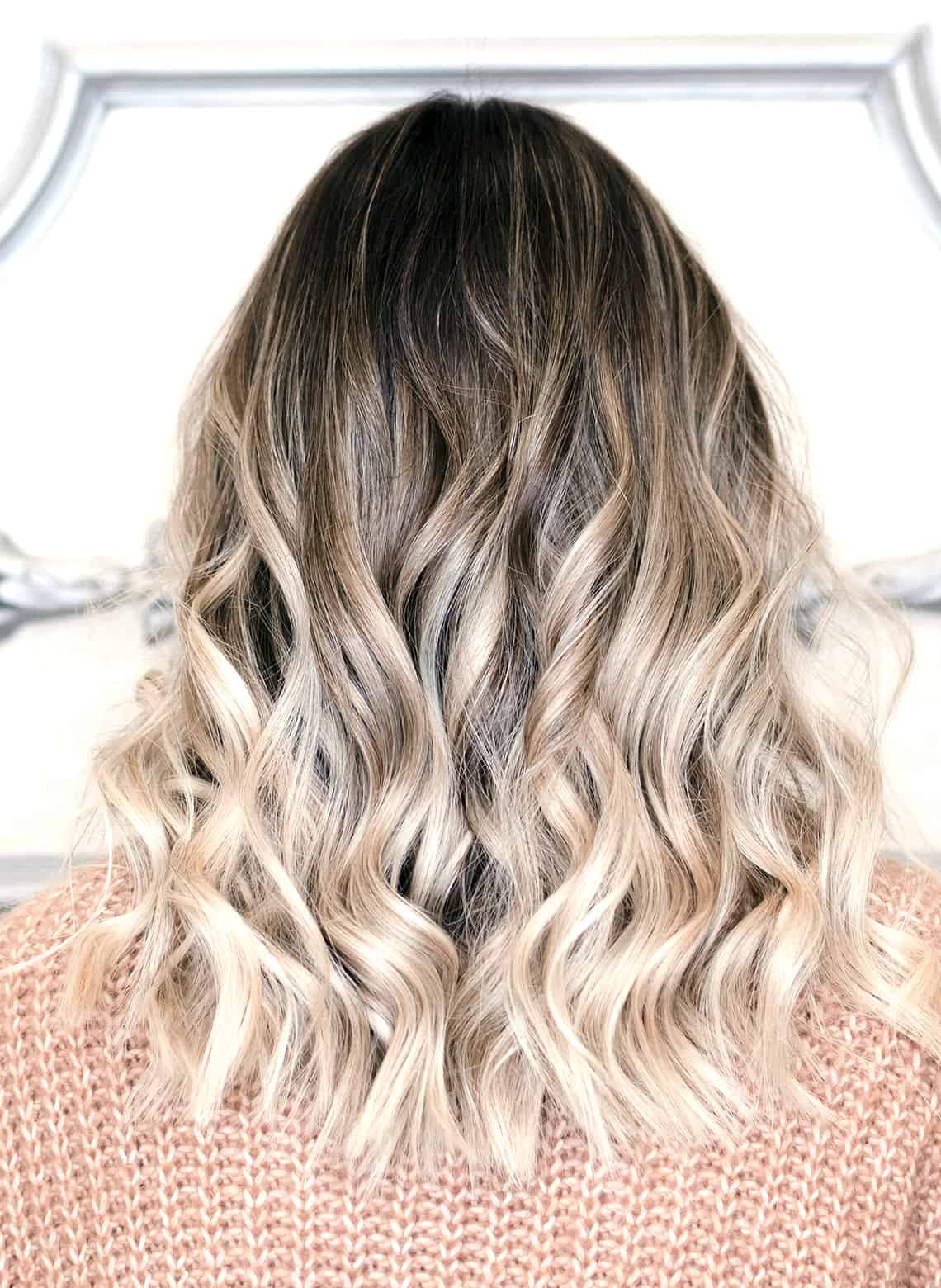
3. Smoky balayage
Light blonde and white highlights can create an almost smoky look, especially when contrasted with darker hair colors. Far from being ominous, this look is instead chic and trendy, as the light highlights create a fashionable look that is echoed by many.
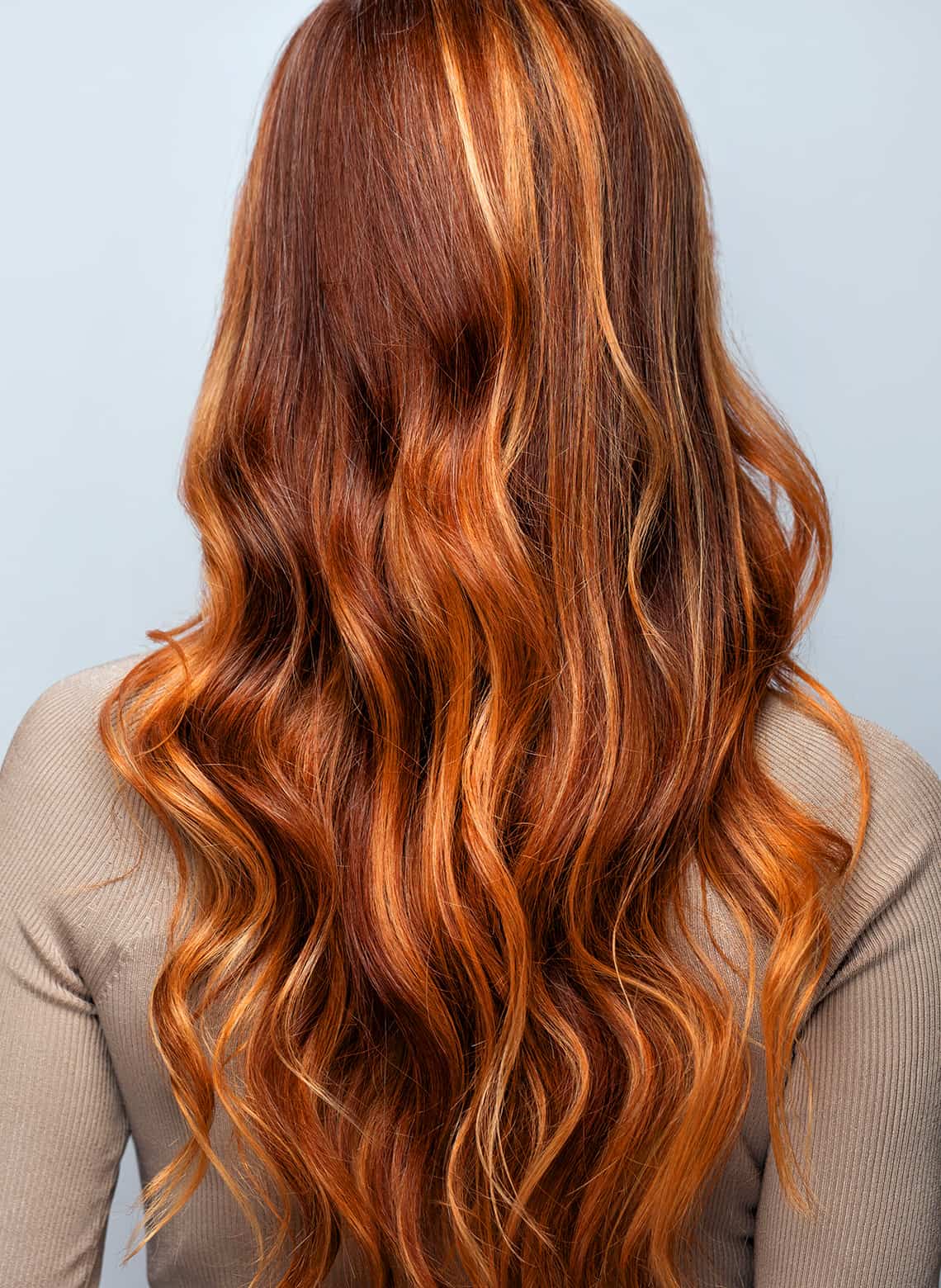
4. Fiery balayage
Balayage isn’t only reserved for brunettes or blondes. Adding blonde can work for every hair color! In fact, adding a bit of blonde highlights into red hair can create a honey or fire-like shade that adds intrigue, fashion, and dimension into an already beautiful hair color.
It’s natural to want to upgrade your hair to a fun, new look. Whether you want to add in some subtle highlights for the summertime or add some lightness into your look during a gray winter, balayage can create something that is both fashionable and easy to maintain. To get the best results, you should always consult a professional, who can walk you through the process and help you achieve the best results.
